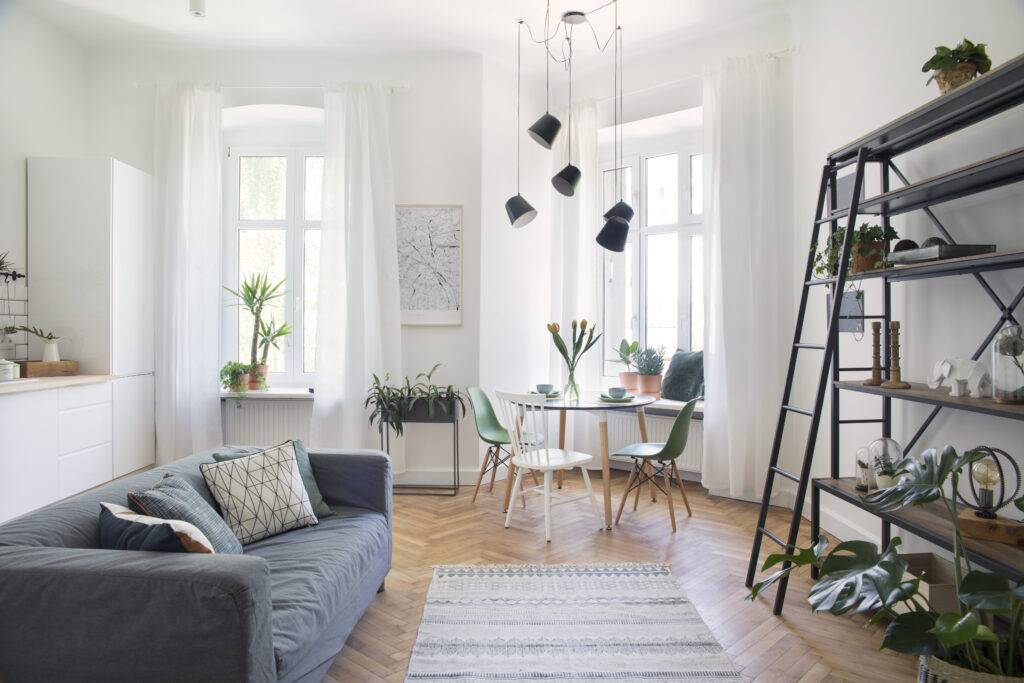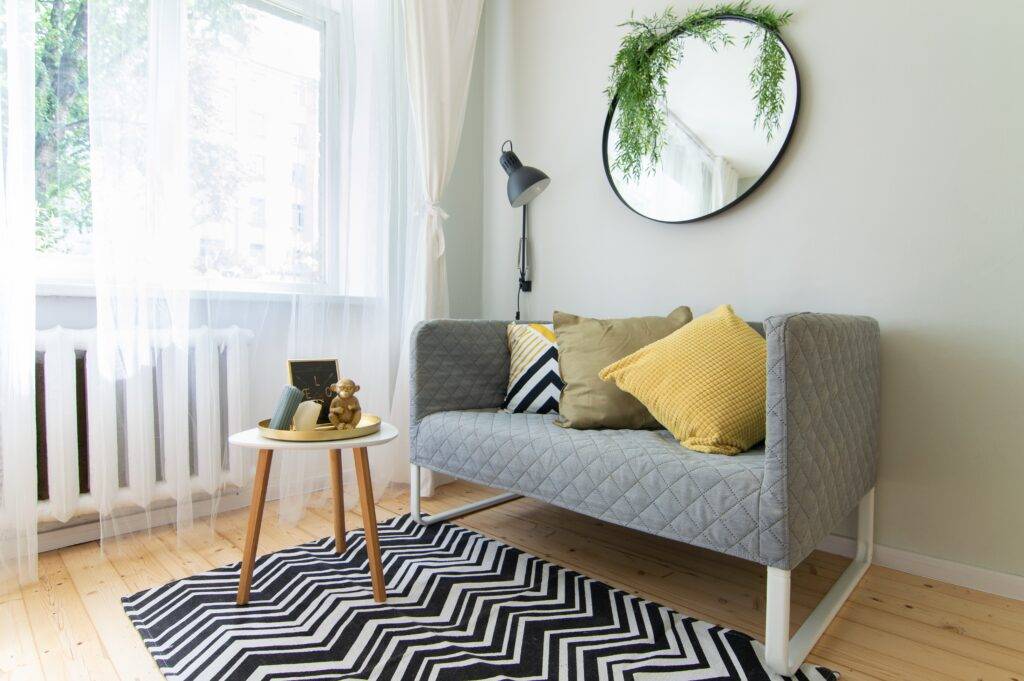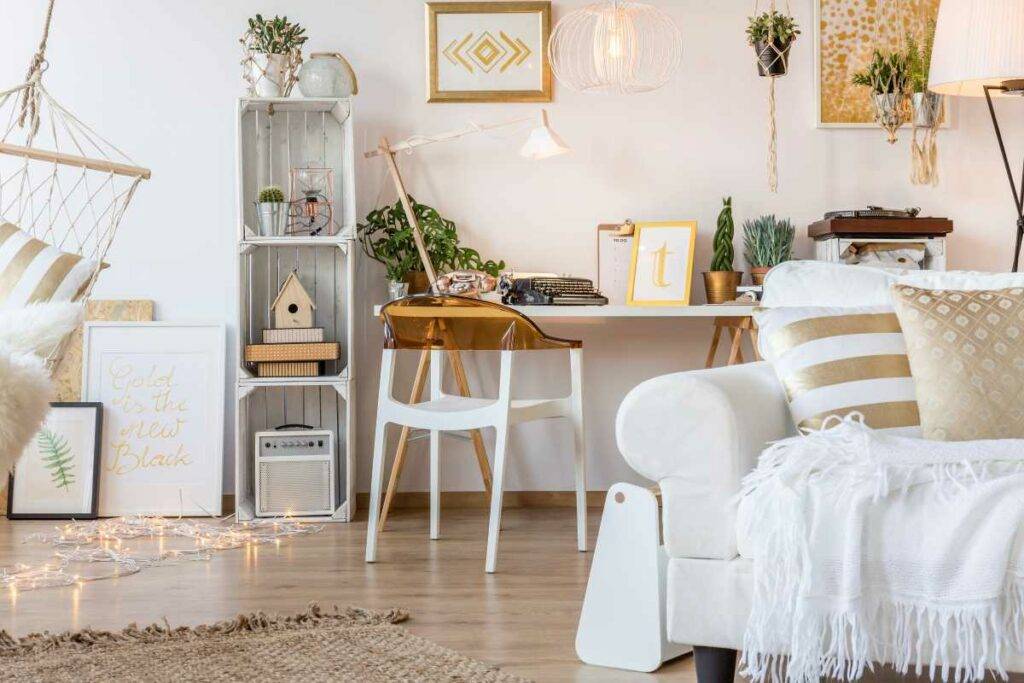Living in a small space has its unique challenges, but it’s also incredibly rewarding. There’s something special about creating a home that feels cozy and functional, even when you’re working with limited square footage. As an interior designer who loves transforming compact areas into stylish sanctuaries.
These are the top tips and tricks for small home decor that you can do in 2024 yourself. I hope you’ll feel inspired to embrace the potential of your small space.
Trending Small Home Decor Ideas

After going through these ideas for your accommodation, I hope you’ll feel inspired to embrace the potential of your small space.
Embrace Multi-Functional Furniture
When I’m working with clients in small spaces, the first thing I suggest is multi-functional furniture. It’s a simple but effective way to make the most of a compact area. I love recommending sofa beds because they provide comfortable seating during the day and transform into a cozy bed at night. This is perfect for those living in studio apartments or anyone who wants to accommodate guests without sacrificing their own comfort.
Ottomans with hidden storage are another favorite. I use them to store extra blankets, magazines, or board games, keeping clutter out of sight. If you’re short on storage, a coffee table with a lift-up top or built-in compartments is a great choice. I’ve even seen dining tables that fold down into smaller units when not in use. These versatile pieces allow you to adapt your space as needed, creating more room for what matters.
Use Vertical Space

One of the most underutilized areas in a small home is the vertical space. I always recommend looking up to find storage opportunities. Floating shelves are fantastic for displaying decorative items or storing books without taking up floor space. In the kitchen, a pegboard is a stylish and practical way to keep utensils, pots, and pans organized and within reach. This can free up valuable drawer or cabinet space for other essentials.
Closet organization systems are also a game-changer. I like to install adjustable rods and shelves to maximize storage. It allows you to create a customized space that grows with you. In one of my favorite projects, we used the back of a closet door to hang a shoe organizer, which doubled as storage for smaller items like socks and accessories. Little tricks like these can make a world of difference in a small home.
Lighten Up with Mirrors and Lighting
Mirrors are a decorator’s best friend when it comes to making a small space feel larger. I often suggest placing a large mirror opposite a window to reflect natural light and create a sense of depth. Smaller mirrors can be used to create a decorative gallery wall, adding both style and a feeling of spaciousness. It’s amazing how much difference a well-placed mirror can make.
Lighting is equally important. In small spaces, I favor fixtures that provide ample illumination without being overwhelming. Wall-mounted sconces or adjustable floor lamps are great options because they don’t take up valuable table or floor space. I remember working with a client who had a particularly dark corner in her apartment. We added a wall-mounted sconce with a soft, warm light, and it completely transformed the ambiance. It’s all about finding the right balance between form and function.
Opt for Light Colors and Minimal Patterns
Color plays a significant role in how a space feels. Lighter shades like white, cream, or pale gray tend to reflect light, making a room feel more open. I often recommend keeping the walls neutral and adding pops of color through accessories like throw pillows, rugs, or artwork. This approach allows you to change the look of a room with minimal effort, which is perfect for small spaces where you want to keep things fresh without major renovations.
When it comes to patterns, I suggest keeping it simple. Minimal patterns or subtle textures add visual interest without crowding the space. One of my clients had a small bedroom with busy wallpaper, and it made the room feel cramped. We switched to a soft gray with a delicate texture, and the room instantly felt larger and more inviting.
Keep It Simple with Minimal Decor

Clutter is the enemy of small spaces, so I always advocate for a “less is more” approach to décor. It’s all about being intentional with what you bring into your home. I suggest choosing a few meaningful items that reflect your personality, like a unique piece of art or a statement plant. In the bathroom, I recommend keeping surfaces clear and using storage baskets or trays to contain smaller items. A well-organized room not only looks better but also feels more comfortable and spacious.
I remember one project where the client had a small living room filled with various knick-knacks and decorative pieces. It felt chaotic and cluttered. We decided to keep just a few items that held sentimental value and put the rest in storage. The transformation was remarkable—suddenly, the space felt open, airy, and much more relaxing.
Create Zones in Open Spaces
If you’re living in a studio apartment or a small open-plan home, creating distinct zones can help establish a sense of order. This doesn’t mean building walls—it’s about using furniture, rugs, and other elements to define different areas. I often use area rugs to separate the living and dining spaces. A bookshelf or a folding screen can act as a room divider while providing extra storage. These techniques create a sense of structure without requiring physical barriers.
In one of my favorite projects, we used a small shelving unit to divide the bedroom area from the living space in a studio apartment. The client loved it because it provided privacy and extra storage, and it made the apartment feel more like a home with distinct rooms. By creating zones, you can give each area a defined purpose, making the space feel more organized and intentional. You can also read about Den Ideas that will make your place pop.
How to Know When Your Space Needs a Redesign
Not sure if your small space needs a redesign? Here are some signs that it’s time to rethink your décor:
- Clutter has taken over: If you find yourself constantly tripping over items or struggling to find what you need, it’s time to declutter and reorganize. A small space should be a stress-free environment, not a source of frustration.
- Limited functionality: If your furniture isn’t serving multiple purposes or your layout feels awkward, it’s time to consider new multi-functional pieces and a better room flow.
- Lack of natural light: If your space feels dark and cramped, adding mirrors and improving lighting can make a big difference. A well-lit space feels more welcoming and open.
- Feeling overwhelmed: If your home feels chaotic or stressful, simplifying your décor and creating clear zones can help restore a sense of calm and order.
If any of these signs sound familiar, it might be time for a refresh. Remember, even small changes can have a big impact on how your space feels and functions.
What kind of furniture works best in a small space?

Multi-functional furniture is key in small spaces. Look for pieces that serve more than one purpose, like sofa beds, coffee tables with storage, or foldable dining tables. These types of furniture allow you to maximize your space and adapt to different needs.
Learn to design your Entryway with these Ideas
How can I make my small space feel larger?
To make a small space feel larger, focus on light colors, mirrors, and lighting. Lighter shades on walls and furniture reflect light and create a sense of openness. Mirrors can give the illusion of a larger space, while proper lighting brightens up dark corners and creates a welcoming atmosphere.
How do I avoid clutter in a small home?
To avoid clutter, be intentional with what you bring into your space. Declutter regularly and consider using vertical storage like wall-mounted shelves. Choose furniture with built-in storage and keep décor minimal but meaningful. The goal is to create a space that feels organized and spacious.
Can I have a dining area in a small apartment?
Absolutely. To create a dining area in a small apartment, look for compact dining solutions like a drop-leaf table or a small bistro set. You can also use a kitchen counter or bar top for dining. Define the dining area with a rug or a pendant light to make it feel like a separate space, even in an open-plan layout.

